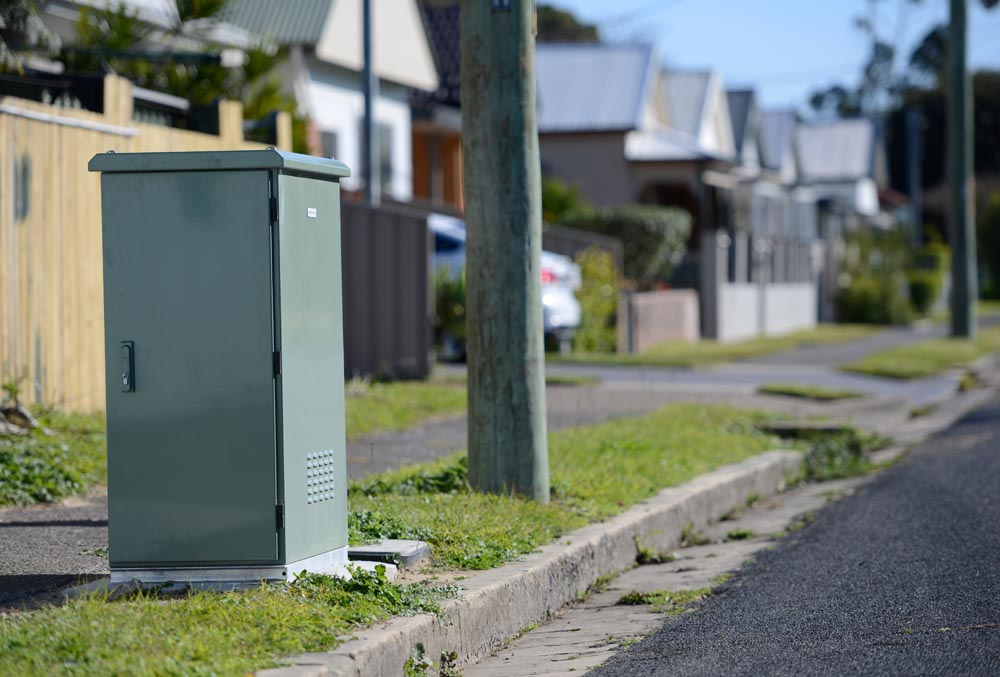When it comes to choosing an NBN plan, the technology type used to connect your home to the NBN can have a big impact on what speeds and plans you can get at your home.
Fibre to the node, known as FTTN NBN, is one of the several different technology types, but it’s also one of the slower connection types. In our guide, we’ll take a look at FTTN technology along with what you can expect for an FTTN speed and the FTTN plans available.
NBN offers you might like
The following table shows a selection of sponsored unlimited data Standard Plus Evening Speed (NBN 50), and Premium Evening Speed (NBN 100) plans on Canstar Blue’s database with links to referral partners..
 |
1 Month Contract (1 month min. cost $68.90) Typical evening speed of 50Mbps
|
Unlimited Data/month |
$68.90 Cost/month |
Go to Site |
 |
1 Month Contract (1 month min. cost $65.00) Typical evening speed of 100Mbps
|
Unlimited Data/month |
$65.00 Cost/month |
Go to Site |
 |
Superloop | Lightspeed 1Gb offer 1 Month Contract (1 month min. cost $85.00) Typical evening speed of 90Mbps
|
Unlimited Data/month |
$85.00 Cost/month |
Go to Site |
Unlimited Home Standard (NBN 50) Plans
The following table shows a selection of published unlimited NBN 50 plans on Canstar Blue’s database, listed in order of standard monthly cost (excluding discounts), from the lowest to highest, and then by alphabetical order of provider. Use our comparison tool above to see plans from a range of other providers. This is a selection of products with links to referral partners.
Unlimited Home Fast (NBN 100) Plans
The table below shows a selection of published unlimited NBN 100 plans on Canstar Blue’s database, listed in order of monthly cost, from the lowest to highest, and then by alphabetical order of provider. Use our comparison tool to see plans from a range of other providers. This is a selection of products with links to referral partners.
What is Fibre to the Node NBN?
FTTN, which stands for Fibre to the Node, is part of the NBN and is one of the most common connection types. It was designed to be cheaper and easier to rollout where a fibre optic cable is run from a ‘point of interconnect’ (POI) to a central box in your neighbourhood or street called a ‘node’. Your house then connects to this node using existing copper wiring, which can be repurposed from existing phone and ADSL copper wiring.
POIs are dotted around the country – there are more than 120 of them – and are commonly located where old telephone exchanges are/were. The NBN using the same wiring as landline connections, but this doesn’t mean you can’t use your home phone, which you can do through a technology called VoIP.
Because FTTN uses the old copper lines for part of the overall connection, it’s designed to be cheaper to rollout than other types of NBN, like FTTP. However, it comes with some downsides in regards to potential speeds and reliability due to your old copper connection making up a sizeable portion of the cabling. It’s for this reason that many homes with FTTN connections are now eligable for a free NBN fibre upgrade.

What FTTN speed can I get?
FTTN can reach theoretically up to 100Mbps, however fibre to the node customers are heavily reliant on how far they live from their node. Like with old ADSL exchanges, FTTN customers farther away from the node have a diminished capacity to achieve top speeds.
NBN Co says customers who live within 700 metres of the node can achieve around NBN 100 speeds, while those outside of this radius can theoretically achieve a maximum of 60Mbps.
It’s for this reason that NBN providers are not allowed to put FTTN customers on a 100Mbps plan if they live outside the 700m radius or if they test the connection and are physically unable to achieve a 100Mbps top speed.
However, there are a few other factors that can determine your real-world speed. The typical evening speeds indicate the speeds you can expect between the hours of 7pm and 11pm when more people are online and when more members of the household are likely to be connected to the internet.
While fast NBN speeds like Home Superfast (NBN 250), Home Ultrafast (NBN 1000) and maybe Home Fast (NBN 100) are generally out of reach for many FTTN customers, you can expect to be able to get FTTN speed plans on the popular Home Standard (NBN 50) speed tier and the slower Home Basic I (NBN 12) and Home Basic II (NBN 25) speeds.
Compare FTTN plans
As previously mentioned, FTTN connections are usually limited to NBN 12, NBN 25 and NBN 50 speed tiers, however some FTTN homes may be able to get NBN 100 plans. When you’ve chosen a provider, it’s always worth checking your address on the NBN provider’s website to see which plans are available to you, however the provider should inform you if your chosen plan isn’t available to your home.
The good news is that FTTN plans don’t cost more than plans for other NBN connections. The slower NBN speed tiers will typically have the cheapest prices, while NBN 50 will cost a bit more.
Unlimited NBN 100 Plans
The following table shows a selection of published unlimited NBN 100 plans on Canstar Blue’s database, listed in order of standard monthly cost, from the lowest to highest, and then by alphabetical order of provider. Use our comparison tool above to see plans from a range of other providers. This is a selection of products with links to referral partners.
Unlimited NBN 50 Plans
The following table shows a selection of published unlimited NBN 50 plans on Canstar Blue’s database, listed in order of standard monthly cost, from lowest to highest, and then by alphabetical order of provider. Use our comparison tool above to see plans from a range of other providers. This is a selection of products with links to referral partners.
Unlimited NBN 25 Plans
The following table shows a selection of published unlimited NBN 25 plans on Canstar Blue’s database, listed in order of standard monthly cost, from the lowest to highest, and then by alphabetical order of provider. Use our comparison tool above to see plans from a range of other providers. This is a selection of products with links to referral partners.
Unlimited NBN 12 Plans
The following table shows a selection of published unlimited NBN 12 plans on Canstar Blue’s database, listed in order of standard monthly cost, from the lowest to highest, and then by alphabetical order of provider. Use our comparison tool above to see plans from a range of other providers. This is a selection of products with links to referral partners.
What equipment do I need for FTTN NBN?
There is no special installation required by NBN Co, and there’s not much more you have to do for FTTN NBN. This is because your home already uses the existing copper wire connection, meaning you can connect as normal. However, you’ll need to make sure you have an NBN-ready modem. Otherwise you’ll need to buy a new modem, with most NBN providers offering the option to add a modem on to your NBN plan.
Related: What to do when your internet is down
Can I change my FTTN technology type?
The good news is that millions of homes and businesses are eligible for a free fibre upgrade if you have a FTTN connection. While this free upgrade program might not be available to all FTTN homes now, the roll out is ongoing and other homes and businesses may be available for the free upgrade down the track.
Otherwise, you can upgrade with the technology choice program, however you will have to pay for this upgrade yourself.



Share this article